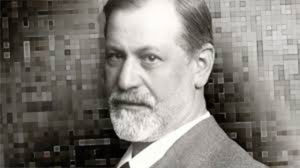Configurations de l’inconscient.
Résumé
Dans un premier temps, l‘auteur s‘attache à identifier les approches de l‘inconscient qui ont anticipé et préparé la découverte freudienne. Elle distingue les approches « pragmatiques » et « psychothérapeutiques » de l’inconscient puis la pensée philosophique des facultés où l‘inconscient est apparu progressivement comme le résultat d‘un travail élaboratif de pensée postérieur à la mise à jour du concept de conscience. Elle s‘attache ensuite à montrer les liens avec des expériences scientifiques menées dans le cadre de la recherche neurologique du XIXème siècle (créatrice du concept d‘inconscient cérébral), de la psychologie expérimentale et du positivisme. Enfin elle rappelle les actes créateurs -tout particulièrement les grands écrivains, les mythes et les contes – qui donnent à voir l‘inconscient.
Elle suggère que la principale originalité et force de création de Freud est d‘avoir pu être simultanément réceptif à la multiplicité hétérogène de ces sources — psychothérapeutiques, philosophiques et littéraires, médicales — et ensuite d‘avoir articuler sa synthèse originale et complexe sur l‘observation clinique, dans un objectif toujours théorico-clinique. C‘est ainsi que Freud a constitué un nouvel objet – social, épistémologique, thérapeutique – : la psychanalyse.
L‘auteur montre sur quels aspects spécifiques Freud se distingue de ces prédécesseurs en précisant les traits particulièrement novateurs de ses propositions sur l‘inconscient.
Dans la deuxième partie de l‘article l‘auteur propose ses hypothèses concernant quelques particularités ou spécificités épistémologiques de l‘inconscient tel que l‘entend et le pratique la psychanalyse.
Samenvatting
De auteur beschrijft eerst de benaderingen van het onbewuste die aan de freudiaanse visie voorafgingen en deze hebben voorbereid. Ze onderscheidt de pragmatische en psychotherapeutische benaderingen van het onbewuste, vervolgens de filosofische opvatting waarbij het onbewuste werd afgeleid na het doordenken van het concept van het bewuste. Hierna volgt een bespreking van de wetenschappelijke bevindingen van het neurologisch onderzoek van de negentiende eeuw en worden verbanden gelegd met de experimentele psychologie en het positivisme. Tenslotte herinnert ze aan creatieve prestaties die het onbewuste laten zien met name het werk van grote schrijvers, de mythen en de sprookjes.
Volgens de auteur berust de originaliteit en de creatieve kracht van Freud op het feit dat hij zich voor deze verschillende bronnen (psychotherapie, filosofie, literatuur, geneeskunde) simultaan openstelde en op die wijze een nieuw object heeft geconstitueerd : de psychoanalyse.
De auteur beschrijft op welk vlak Freud zich met betrekking tot het onbewuste, onderscheidde van zijn voorgangers en waar hij vernieuwing bracht.
In het tweede deel van het artikel stelt de auteur haar hypotheses voor in verband met enkele epistemologische bijzonderheden van het onbewuste, zoals begrepen en in praktijk gebracht door de psychoanalyse.
Summary
The author seeks to identify different ways of approaching the unconscious that anticipated and prepared Freud‘s discovery. She makes a distinction between the « pragmatic » and « psychotherapeutic » ways of envisaging the unconscious, then the philosophical thinking about the faculties in which the unconscious appeared progressively as the progressive result of on on-going work of reflection coming after the development of the concept of conscience. She then seeks to show the links between scientific experiments undertaken in the framework of neurological research in the 19th century (which created the concept of the cerebral unconscious), of experimental psychology and of positivism. Finally, she evokes the creative acts — especially those of the great authors, myths and stories — that reveal the unconscious.
She suggests that the principal originality and creative force in Freud is to have been able to be simultaneously receptive to the heterogeneous multiplicity of sources — psychotherapeutic, philosophical and literary, medical — and to have then articulated his complex original synthesis of his clinical observation, with an objective that remained theoretico-clinical.
So it is that Freud created a new object — social, epistemological, therapeutic : psychoanalysis.
The author shows which specific aspects distinguish Freud from his predecessors, pointing out the particularly innovative characteristics of his propositions about the unconscious.
In the second part of the article, the author proposes her hypotheses concerning some particularities or epistemological specificities of the unconscious as it is thought and practiced in psychoanalysis.





